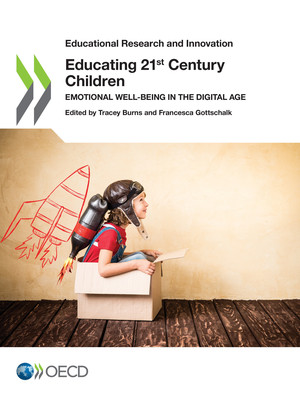copy the linklink copied!Foreword
Modern children’s lives have changed on a number of measures, often for the better. They have an array of digital tools to creatively express themselves. There is increased awareness of mental health issues, and support from loved ones is often only the touch of a button away. But children are also facing new challenges. They are reporting less sleep and more stress. Many children have a digital footprint before they can consent to it – sometimes even before they are born. Old threats take on new complexions in the digital world, like cyberbullying.
Education must evolve with our societies, anticipating change rather than simply reacting to problems. The first decades of the 21st century are the intersection of a turn of a millennium and rapid technological change. Although people tend to be wary of change, digital tools have fundamentally transformed our lives. There is a need to understand what has changed for our children. It is equally important to determine what has not changed, for example the importance of strong and healthy relationships with family and friends.
The Centre for Educational Research and Innovation (CERI)’s 21st Century Children project focuses on the nature of modern childhood. It asks the questions: what does life look like for children in the digital age? What does this mean for education? How can teachers and schools work together with parents and communities to protect and guide children while still allowing them to be children, and learn by making mistakes?
This report is part of a series that examines modern childhood. This volume focuses on the intersection between emotional well-being and digital technologies. It explores how parenting and friendships have changed in the digital age. It examines children as digital citizens, and how education systems can support them to take advantage of online opportunities while minimising the risks. It ends with a look at how education can foster digital literacy and resilience, highlighting the role of partnerships, policy and protection.
Many of these trends, especially the digital ones, are a continuously moving target, and reports such as this can become quickly outdated. This volume provides an important snapshot at this point in time. The work of education systems around the world is cut out for us as we try to stay ahead of, or at least on top of, the curve. We owe it to our children and youth to separate fact from fiction, and help support them to get the best start in life.
This publication was edited by Tracey Burns and Francesca Gottschalk from the OECD Centre for Educational Research and Innovation (CERI). Tracey Burns conceptualised this volume and leads the 21st Century Children project. Francesca Gottschalk was responsible for coordinating the contributions of the external experts. Individual Secretariat chapters were authored as follows: Tracey Burns (Chapters 1, 4, 12, 13, 14), Francesca Gottschalk (Chapters 2, 11, 12), Liam Bekirsky (Chapter 3), Quynh Nguyen (Chapter 4) and Alejandro Paniagua (Chapter 13). Within the OECD Secretariat, Alison Burke, Sophie Limoges and Leonora Lynch-Stein contributed to the final stages of preparation for publication.
Metadata, Legal and Rights
https://doi.org/10.1787/b7f33425-en
© OECD 2019
The use of this work, whether digital or print, is governed by the Terms and Conditions to be found at http://www.oecd.org/termsandconditions.


